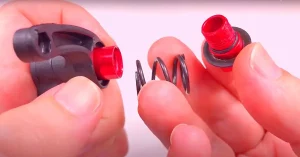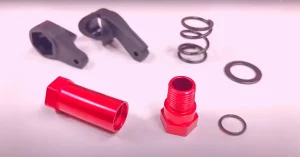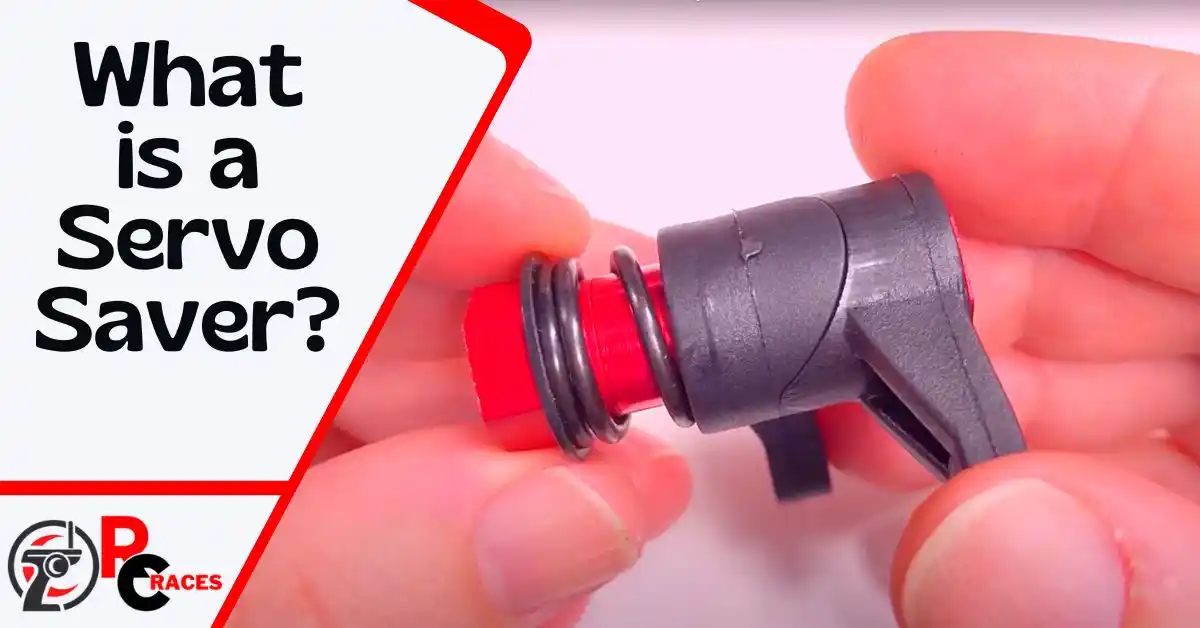During off-road driving and racing, RC cars can experience notable impacts. Such bumps are harmful to the steering servo gears. However, no worries since servo savers are in place to protect them.
A servo saver is a mechanical device that absorbs the shock of sudden impacts and protects the steering servo from damage. This protective device helps you extend the servo’s lifespan and makes your RC car more durable overall.
Well, that was just the introduction to a servo saver. But the article covers much other relevant information about the device and its functionalities. Would you like to know more? Read the rest.
How does an RC servo saver work?

When your RC car’s wheels hit any obstacle, such as a rock, it creates an unusual force that can harm the servo gears. As a result, the servo installed inside can malfunction, or stop working completely.
No RC owner would expect it. This is the case where a servo saver has a major role.
The device has a spring-loaded mechanism that sits between the servo and the steering linkage. In the case of a sudden shake, the mechanism absorbs the impact and moves the steering linkage a little without transferring the shock to the servo.
This is how it saves the servo in an RC car. For this reason, servo savers have been crucial components of high-performing RC cars to enhance their performance and durability.
Types of servo savers in RC cars
RC servo savers come with four variations in general. Depending on sizes and torque rating, they are widely used in both digital and analogue servos. Let’s get introduced to them.
1. Spring-Loaded Servo Saver
This servo saver uses a spring mechanism to reduce the shock, a popular choice for off-road racing and bashing. When wheels hit any obstacle, it reduces the impact so the force does not transfer to the servo gears.
2. Rubber Diaphragm Servo Saver
For on-road racing, a rubber diaphragm is the best option because of its smoother operation and lightweight. The diaphragm is made of rubber that absorbs sudden shock and protects the steering servo from unusual force.
3. Friction-Based Servo Savers
This type of servo saver works based on a friction mechanism and provides a more direct steering response. That’s why it is a popular choice among people who like drifting and precision driving. When the steering linkage gets hit by something, the friction mechanism becomes active and reduces the force.
4. Hybrid Servo Savers
A hybrid servo saver is a combination of spring-loaded and friction-based designs. It provides a balance of shock absorption and steering response, ideal for different driving styles.
Benefits of using a servo saver in RC cars
Though the name of the device represents that it saves the servo, it does more than that in reality. Here are the benefits you can get from a servo saver in an RC car.
1. Durability enhancement
Impact and abnormal shock are two of the major reasons that make an RC car fragile. Since a servo saver is designed for jerk reduction, it can enhance the durability of your RC car’s steering system and other components.
2. Better handling
The device makes your RC car more stable and reduces the risk of unpredictable movements. Thus, you can get better handling of the car. Servo saver seems to be an essential component for beginners who are developing their driving skills.
3. Maintenance cost reduction
Servo savers protect an RC car from several possible damages. Because of this device, you may not need to repair and replace costly parts more frequently. In the long run, you can save a big budget for this tiny component.
4. Customizable performance
If you are an experienced RC car driver, you can customize your car’s performance by choosing very specific servo savers.
How to choose the right servo saver for your RC car

In an earlier section, we knew about the variations of servo savers. However, you should pick the right one which will meet your true needs. Here are some tips to choose the best servo saver for your RC car.
- Vehicle Type: The first thing to note is which type of car you have. If it is an off-road vehicle, you need a servo saver with a more shock absorption facility. On the other hand, on-road vehicles need a servo saver with a more precise steering response.
- Driving Style: For an aggressive driving style or bashing, choose a servo saver that absorbs more shock. In contrast, precision driving or drifting will require a servo saver offering a more direct steering response.
- Steering Servo Size: Understanding the size and weight of your steering servo is also crucial to consider which one you need. For example, larger and heavier servos need more shock absorption than smaller and lighter ones.
- Driving Conditions: What type of driving conditions does your RC car face? Notice carefully whether it is rough or plain terrain. Choose a servo saver carefully since both surfaces require entirely different ones.
- Adjustable Settings: If you are a pro-level RC driver and looking for more adjustable settings, choose one based on your accurate requirements to fine-tune the performance.
Frequently Asked Questions
Can you drive an RC car without servo savers?
Technically, it is possible to run an RC car without servo savers. But using this device is suggested by experts to protect your vehicle from unexpected damages.
Can you use a servo saver with both analog and digital servos?
Servo savers can be used with both digital and analog servos. However, they have variations in sizes, weights, and torque ratings. You must check these facts to ensure that one is compatible with your RC vehicle.
Can a servo saver be used in both electric and nitro-powered RC cars?
Yes, absolutely. The device is designed to keep the steering servo safe from damage caused by sudden shocks. So, the power source of an RC car has no impact on its performance.
Final thought
After reading the entire article, you can realize how important component the servo saver is! It does not only protect the servo from damage but also makes your RC driving experience more enjoyable. During choosing one for your RC car, you must consider your needs and surrounding factors including the driving conditions, size of the servo, etc. A good servo-saver selection will let you enjoy a high-performance and durable RC car.


